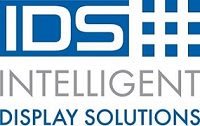TFTs, or thin film transistors, refers to an active-matrix LCDs (liquid crystal displays). They are known for their resilience and versatility and have revolutionised how information can be presented across multiple applications. Choosing a TFT involves several considerations, and depending on the end application, the importance of particular factors will vary. Successfully meeting these requirements will be fundamental to ensuring you have an effective, efficient, and attractive end design.
So, what to consider…
Size
A good place to start is knowing your size requirements and limitations. TFT size is measured as the diagonal length of the display. Size considerations not only include physical space the outer dimensions of the TFT must fit, but also the size of the TFT's active area. The active area of a TFT is the display window on that is responsive and where change can be actively made.
Brightness
When selecting a TFT, brighter doesn’t always mean better. TFT brightness will be determined by the environment in which it will be situated. When indoors, suitable brightness is more likely to be around 300nits, as the display does not have to compete with sunlight. When outdoors, brightness would be more effective at 500nits, or even 1k nits if in direct sunlight, so that the display can still be perceived clearly. If the TFT is brighter than it needs to be for the desired setting, the module may show signs of visual fatigue, and diminished contrast between pure black and pure white, affecting the performance of colour and grey scale. It is worth noting that within the TFT parameters, there are varying technologies influencing brightness; TN, STN, Reflective and IPS governing the basics, but optical enhancements such as circular polarizers, O-film and anti-reflective coating amongst others also effect brightness. Even adding a touch screen can affect brightness, reducing it by up to 20%.
Viewing angle
This is determined by the TFTs LCD type. The wider the viewing angle, the larger the range at which the image on the screen can still be viewed clearly. This is enabled by the alignment of the liquid crystals within the display. They are aligned horizontally, which means that light can pass through them more easily. This results in less ‘glare’ on the screen as well as a widened viewing angle. Often TFTs have about a viewing angle of around 140 degrees, but this can be higher. For instance, when implementing contrast enhancement mechanisms with IPS technology which offers 170-degree viewing capability.
Interface
Multiple types of TFT display interfaces have been designed in recent years for all variations of display size. Some common interfaces include HDMI, RGB, LVDS, MIPI, SPI, RS232 and Parallel MCU. Newer technologies like eDP are also becoming more common. Choosing the best interface once again relies heavily on what the end application is. The choice will be guided by the resources on your application, as they each put different demands on time and system requirements.
Temperature
Like brightness, the required temperature range for a TFT will be determined by the operating environment. TFTs are sensitive to ambient temperature conditions. Typically, the recommended working temperature for a TFT is 0 to 50°C and -20 to 60°C for storage. However, when operating in outdoor environments, the TFT may experience more complex temperature variations. So more commonly now manufacturers offer variants that operate at -20 to +70°C. In summer, the ambient temperature can exceed 60°C, whilst in winter, it could fall below -20°C. If the temperature becomes too cold, the viscosity of the liquid crystal fluid within the TFT will decrease causing an increase to response times. Comparatively, if a TFT becomes overheated, damage to circuit board components can occur. There are additional techniques and mechanisms that can be explored to enhance TFT performance in extreme temperatures.
Contrast ratio
This is a key factor for optical performance. A better contrast ratio will create an image that is more layered, with the light and dark are clearly distinguished. This is more aesthetically pleasing to users and makes the display image easier to perceive, particularly when under dark conditions. Most deficits in contrast ratio occur in high ambient light. There are mechanisms available to manage this parameter, including timing control (TMR) internally, and surface coatings like AR (anti-reflection and for outdoor conditions optical bonding).
Touch requirements
In a growing technological world, both intelligent user interfaces and touch functions are being a prerequisite for many new product designs. Therefore, TFT touch enhancements have become more cost-effective. TFT touch screen works with either capacitive or resistive technologies. Capacitive touch screens use an overlay of conductive material that senses a user's touch. Whereas resistive touch screens have two layers separated by a small gap, which detects pressure when pushed.
Cover lens and optical bonding
A cover lens is bonded to the display and protects it from scratches, dirt, and UV radiation. So, if choosing a TFT for a high-intensity and hard-wearing application, this may be needed to prevent damage. The size and thickness of the cover lens will determine the level of protection it provides the display. Optical bonding can be used alongside a cover lens to significantly reduce any internal reflections produced between the cover lens, and display layers by filling any air gaps between the layers with an optically clear adhesive.
Unsure what your requirements are? Get in touch with us today.
Info@i-lcd.com 01635 294600


